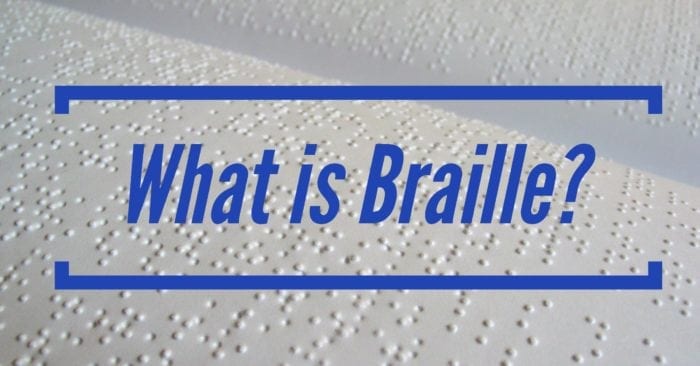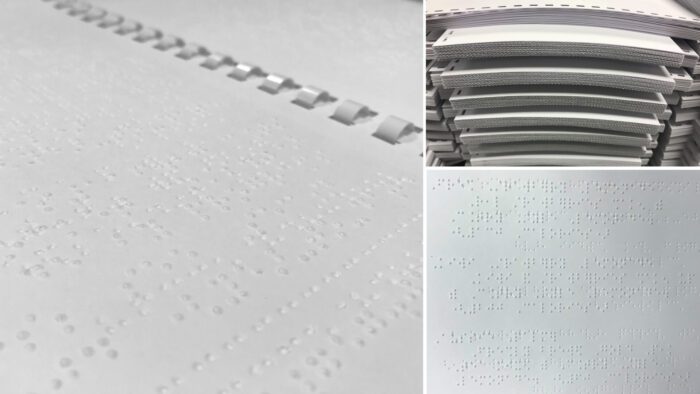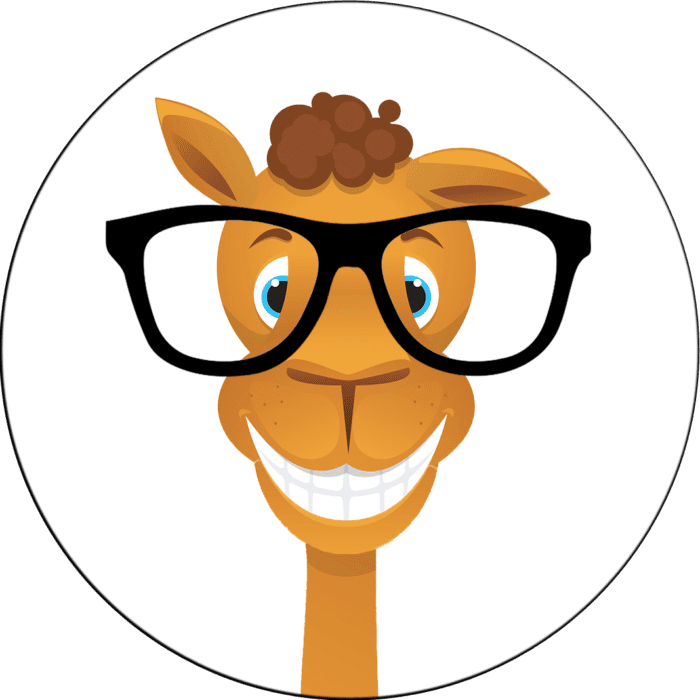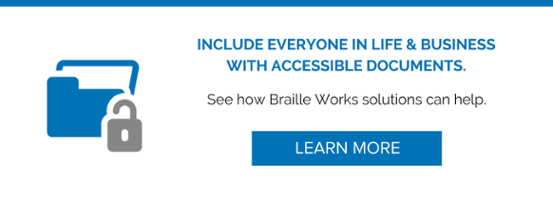Braille Defined – What is Braille?
Published onJump to:
- What is braille?
- Who invented braille?
- Who uses braille?
- What does braille look like?
- What is the braille alphabet?
- How is braille printed?
- What is braille paper?
- What is a braille reader?
Braille is one of the most recognizable forms of accessible documents. But, unfortunately, it may also be one of the most misunderstood. We want to change that and help everyone understand braille, its history, and how people use it.

What is braille?
Braille is a tactile way of reading and writing a language without sight.
Many people believe braille is a language. It’s not. In fact, just because someone reads braille does not mean they’ll be able to read all braille. Why? It’s simple:
Braille is a code.
You read that right. Braille is a code used to transcribe languages, most of which have their own unique braille code.
Braille uses a combination of 6-dot cells that identify letters, numbers, punctuation, and even entire words. Primarily used by people without sight, braille readers run their fingertips from left to right along the lines of cell combinations to decipher the code.
Related: Braille Is Not a Language. Here’s What That Means for You.
Who invented braille?
Louis Braille invented the tactile code we know today as braille.
In the early 1800s, a Frenchman named Charles Barbier invented a similar but different tactile reading and writing system. Barbier’s code used a 12-dot cell that was too large to feel with a single touch.
Later that century, eleven-year-old Louis Braille learned about Charles Barbier’s code at his school. Then, inspiration hit, and Louis refined Barbier’s code into a more efficient written communication system for fellow blind users.
Louis spent the better part of the next nine years developing and improving the system of raised dots known by his name.
Over time, the world accepted this code as the fundamental form of written communication for individuals with blindness and visual impairments. Though braille evolved slightly over the years, it remains nearly the same as Louis’s tactile system.
Learn more about braille’s history.
Who uses it?
Since braille allows people to read and write without sight, braille’s primary users are people with blindness or a visual impairment, including people who have some vision. This tactile form of literacy allows for reading information at one’s own pace, quietly and privately.
For example, many of us don’t want our bank statements read aloud for everyone to hear. Thanks to braille, people with blindness can read their statements independently.
You may be surprised to learn that people with sight use braille too.
Many of these sighted braille users learn to read the code with their vision instead of touch. These people consist mainly of teachers, loved ones of someone who reads braille tactilely, and transcriptionists.
Did you know? Braille literacy is still important. Learn why through this personal story.

What does it look like?
Braille is made up of cells containing six possible raised dot combinations. Each 6-dot cell represents a letter, number, punctuation mark, or word. These cells with raised dots come together to form words, number combinations, and text emphasis like capitalization, bold, or underline.
English braille comes in both uncontracted and contracted versions. Uncontracted braille provides a letter-for-letter transcription from standard text. Contracted braille uses a single character to represent a combination of letters, like “ing” or “er,” or even an entire word, like “the” or “it.”
Let’s look at an example of contracted versus uncontracted braille.
Grade 1
Here’s an example of uncontracted, or Grade 1, braille with the words, “You can do it!” in both print and braille.

Those who are new to braille often learn Grade 1 first. It is a one-to-one conversion which means each arrangement of dots represents one letter, number, or punctuation sign.
Grade 2
Here’s an example of contracted, or Grade 2, braille with the words, “You can do it!” in both print and braille.

Grade 2 features symbols representing common words, prefixes, and suffixes of words. The most commonly used form of English braille today, grade 2 saves time and space for its readers.
Did you know? Not all braille is created equal. Learn why quality braille matters.
What is the braille alphabet?
Since braille is a code, each language has a unique braille alphabet.
A braille alphabet assigns a unique combination of a 6-dot braille cell to a character of a language’s alphabet. In theory, each language would have one corresponding braille alphabet, but that’s not always the case.
For many years, English-speaking countries each used their own versions of braille code for the English alphabet. However, within the last decade or so, English-speaking countries came together and combined English braille into one recognized code called Unified English Braille (UEB).
Dive a little deeper with a review of reading and writing braille.

How is it printed?
Believe it or not, braille isn’t printed; it’s embossed. That’s because its primary users are people without sight, so the reader must be able to feel the dots.
Embossing is typically done either with tiny hammers that delicately tap away at thick braille paper or a dot-filled metal plate pressed into paper. We prefer the “tiny hammer” method of embossing.
Braille embossers come in many shapes and sizes. As companies develop and release new models to the public, embossers improve in speed and efficiency. The embossers we use are industrial grade, high-quality, commercial volume machines that help us serve the needs of some of the nation’s largest companies, financial institutions, and even the U.S. government.
Related: Saving Time, Saving Money: “Can we buy a braille printer and just do this in-house?”
What is braille paper?
You may be wondering why one can’t emboss on any old piece of paper.
We encourage you to grab a pen and press it into, but not through, a regular piece of paper. Can you feel the dot you made? How easily is that dot squished into near oblivion?
The problem with standard paper is that it’s not heavy enough to hold the dots over time and multiple uses. Like ink smudging or flaking off, the braille reader loses the entire message when dots flatten or disappear. Embossing on standard print paper compromises a document’s integrity.
On the other hand, some paper is too heavy for braille. Using paper that is too thick leaves you with shallow dots and is therefore illegible. It can also damage embosser print-heads (tiny hammers) over time.
Thankfully we have paper specifically designed for braille. Braille paper is a special kind of paper designed for embossing. The paper is thicker and more sturdy than regular printer paper. It’s strong enough to ensure that the dots remain raised and firm for an extended period.
Which should you choose: Paper or electronic braille?
What is a braille reader?
Braille readers are devices that people connect to computers or mobile devices. Another name for these readers is refreshable braille displays. These displays allow people with blindness to read websites, email, and other digital documents.
The main component of a braille reader is a display area that uses tiny plastic pins that pop up and down through holes on a flat surface to display different characters. The connected computer or mobile device transmits the correct information to the reader, which displays the proper dot sequences.
Some readers also have built-in computing power. This means that they can both operate alone and through a computer connection. These models are typically called Notetakers. In addition, most notetakers feature an onboard voice, so users can choose to read braille with or without a voice, or listen to the voice by itself.

Seymour’s Fun Fact: If a website or PDF’s content hasn’t been remediated or made accessible, the braille reader won’t be able to read anything logically. The technology relies on accessibility.
Braille is…
What is braille? Braille is literacy, independence, and privacy. Audio or text-to-speech software does not easily replace it. Braille is an important, integral part of millions of people’s lives.

Categorized in: Accessibility, Informational
This post was written by



Comments are closed here.